Professor Boyd: Little effect expected on aquaculture systems, but greater concern with global warming and climate change

The atmospheric carbon dioxide concentration has increased from an estimated 280 parts per million (ppm) at the beginning of the industrial revolution (around the year 1750) to a measured 406 ppm in 2017. This increase resulted mainly from combustion of fossil fuels, and it is expected to continue.
Atmospheric carbon dioxide
Carbon dioxide is a greenhouse gas, and is considered the major anthropogenic factor causing global warming. Increasing the concentration of atmospheric carbon dioxide increases carbon dioxide solubility in water. In 1978, the solubility of carbon dioxide in pure water at 1 atmosphere of pressure and 20 degrees-C was 0.56 mg/L. The solubility had risen to 0.67 in 2012 – an increase of nearly 12 percent.
Carbon dioxide is acidic, because it reacts to form carbonic acid. Increased carbon dioxide concentration of the ocean has resulted in a decline in the average ocean pH from 8.12 in 1980 to 8.09 in 2008. This has caused some areas in the ocean to be below saturation with calcium carbonate.
Exposure of calcifying marine organisms such as corals, molluscan shellfish, and some plankton to calcium carbonate under saturation makes it difficult for younger life stages to produce well-formed shells, and the shells of mature organisms tend to partially dissolve. Shells of both wild and aquacultured populations of some species of marine calcifers are thinner than in the past. Assuming the trend of greater atmospheric carbon dioxide concentration continues as expected, it will have dire consequences on marine calcifers and the marine food web.
Alkalinity in freshwater
Alkalinity in freshwater derives mainly from dissolution of limestone, calcium silicate, and feldspar minerals. Greater carbon dioxide solubility as a result of increasing atmospheric carbon dioxide concentration will increase the solubility of these minerals as illustrated below for one form of limestone, calcium carbonate:
CaCO3 + CO2 + H2O ⇌Ca2+ + 2HCO3–.
Adding carbon dioxide drives the reaction to the right resulting in more calcium (Ca2+) and bicarbonate (HCO3–). Calcium is a major ion causing hardness in water, while bicarbonate is the main source of alkalinity in most freshwaters.
The solubility of a sample of limestone from a quarry near Auburn, Ala., USA, increased from 59 mg/L in 1980 to 62.7 mg/L in 2014. The average alkalinity of over 200 streams in Alabama increased from 41.6 mg/L in 1972 to 47.2 mg/L in 2014. The equilibrium carbon dioxide concentrations in water resulting from atmospheric dioxide concentrations ranging from an estimated 280 ppm at the beginning of the industrial revolution to a concentration of 500 ppm (about 100 ppm greater than at present) are shown in Fig. 1. The equilibrium alkalinity resulting from the solubility of calcium carbonate at the different carbon dioxide concentrations is also given.

Effects on pH, alkalinity
Higher carbon dioxide concentration will decrease pH slightly at a given alkalinity in freshwater, but it also will cause a higher alkalinity (Fig. 2). As a result, the pH will rise slightly as the alkalinity increases (Fig. 2). The overall effect of greater atmospheric carbon dioxide concentration likely will be a slight increase in the pH of freshwater.
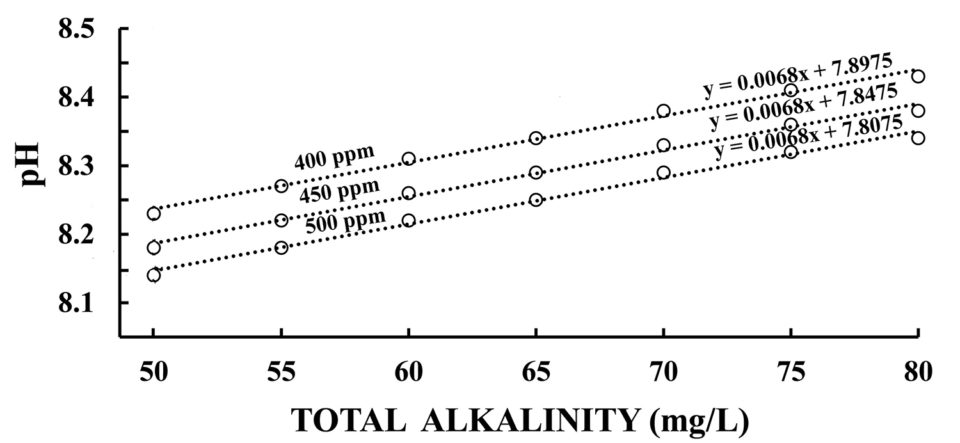
The ocean derived its alkalinity mainly from the input of alkalinity from inflowing freshwater from the land masses. However, the ocean has a hydraulic retention time of about 35,000 years, while freshwater bodies have hydraulic retention times of a few months (especially in the case of aquaculture ponds) to a few years. The rising atmospheric carbon dioxide concentration will cause greater solubility of alkalinity sources on catchments for freshwater bodies and quickly cause alkalinity in these bodies to increase. However, a much longer time would be required for alkalinity to increase in the ocean.
A greater alkalinity will increase the ability of water with pH of 8.3 or less (free carbon dioxide does not exist in water with pH above 8.3) to hold carbon dioxide as illustrated for pH 7 and 7.5 in Fig. 3. Most phytoplankton and other aquatic plants can obtain carbon dioxide from bicarbonate in the absence of free carbon dioxide (pH above 8.3). The rising alkalinity will increase the availability of inorganic carbon for photosynthesis in freshwater.
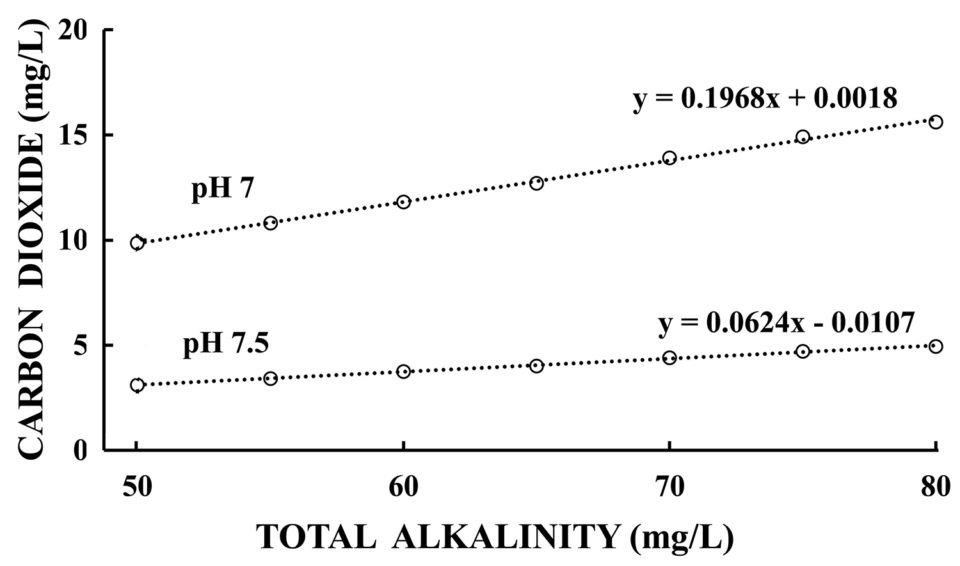
Fig. 3. Aqueous carbon dioxide concentration at pH 7 and pH 7.5 in freshwater waters at different total alkalinity concentrations.
The increase in alkalinity in source water for aquaculture facilities will likely be relatively minor. It will provide slightly lower pH at equilibrium with atmospheric carbon dioxide for any particular alkalinity, but because of the increase in alkalinity, the pH may actually rise slightly over the present normal. The upshot is that there may be slightly more carbon available for phytoplankton photosynthesis making phytoplankton productivity a bit greater. Also, in ponds where liming is required, liming materials will dissolve better at higher carbon dioxide concentration.
Perspectives
The effects mentioned above, however, seem moot points. Aquaculture is steadily becoming more feed-based and intensive. The increased release of carbon dioxide into waters of culture systems by respiration of culture animals and decomposition of uneaten feed and feces overshadows the amount of carbon dioxide entering ponds from the atmosphere.
Phytoplankton in ponds cause pH to rise in the daytime by removing carbon dioxide from water for photosynthesis faster than it can be replaced by the combination of diffusion from the atmosphere and release by respiration of the pond biota. At night, the exact opposite occurs and pH drops. The pH swing is determined by the amount of phytoplankton and the buffering capacity of water. The greater buffering capacity of the water because of greater alkalinity should offset any tendency of greater pH because of more photosynthesis.
There should be little effect of rising alkalinity concentration in aquaculture. Moreover, the small increase in the solubility of liming materials should not be great enough to appreciably decrease liming rates for acidic ponds. The increasing atmospheric carbon dioxide concentration has other impacts to include global warming and climate change. These effects are of greater concern in freshwater aquaculture than is an increase in alkalinity.
Author
-

Claude E. Boyd, Ph.D.
School of Fisheries, Aquaculture and Aquatic Sciences
Auburn University
Auburn, AL 36849 USA
Tagged With
Related Posts
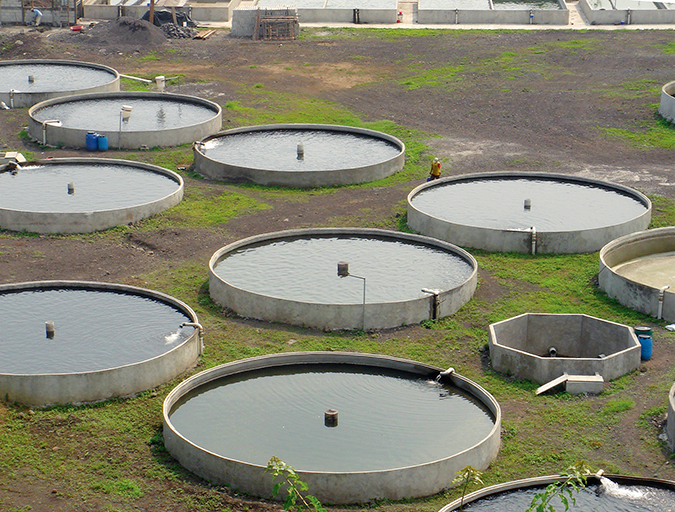
Responsibility
Calcium and magnesium use in aquaculture
Aquatic plants and animals get the essential nutrients calcium and magnesium from water and food. Calcium concentrations impact the hydration and development of eggs in a hatchery, where calcium carbonate precipitation can be troublesome.
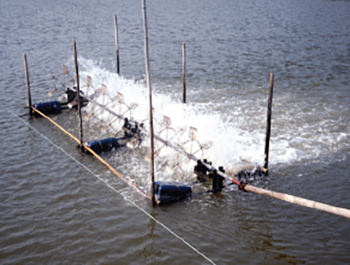
Responsibility
Efficiency of mechanical aeration
Although relatively expensive, mechanical aeration increases production. Asian-style paddlewheel aerators are widely used but are inefficient. Testing has led to more efficient designs that are now widely used in U.S. catfish and shrimp ponds.
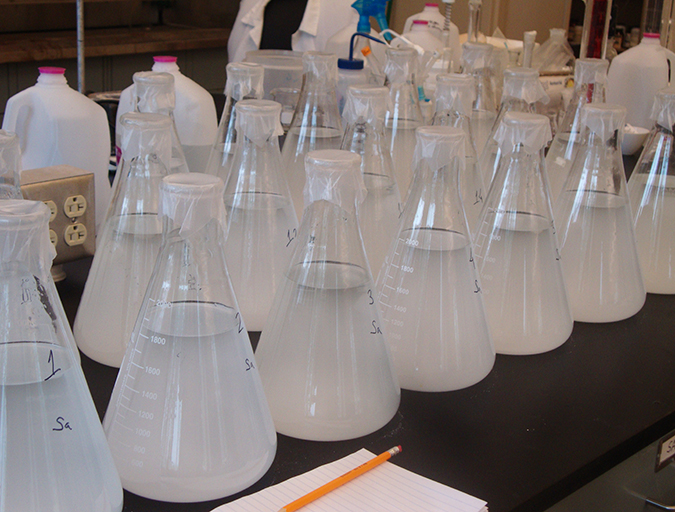
Responsibility
Testing agricultural limestone in aquaculture ponds
This study of agricultural limestone from five different U.S. quarries determined that the samples had comparable chemical compositions but somewhat different solubilities in water. This procedure might be helpful in achieving better results when these products are used in the liming of aquaculture ponds.
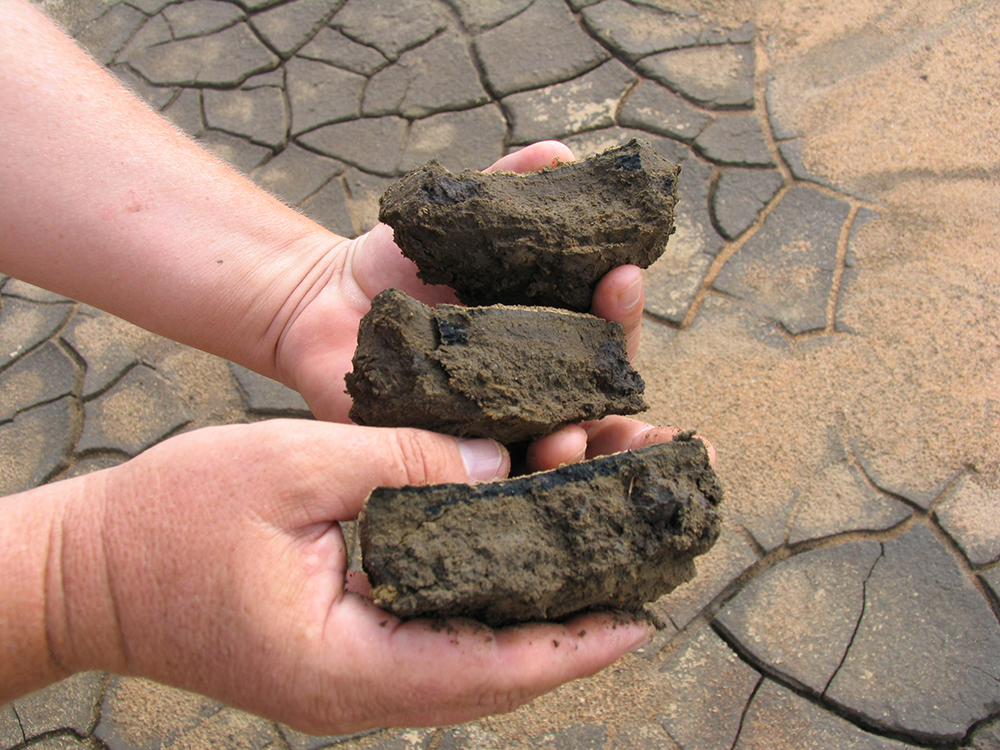
Health & Welfare
How decomposition of organic matter impacts aquaculture ponds
Organic matter decomposition causes most of the water quality issues in aquaculture ponds. Bacterial populations are the primary organisms of decay in an aquaculture system, including its organic matter.

